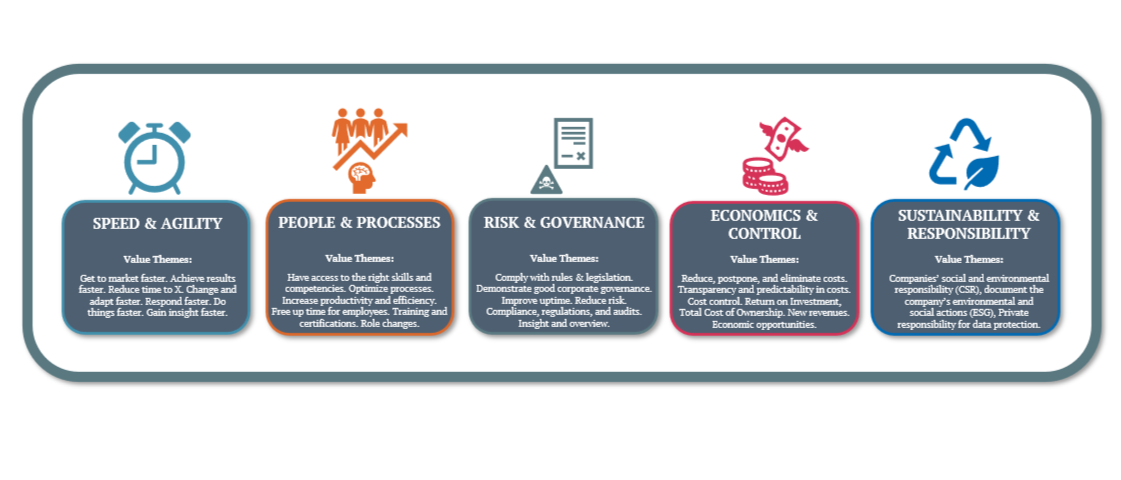
The 5 value model - Why "value communication" often fails.
“I’m already doing value-based selling.”
That’s something we hear from sales professionals all the time. And we get it—most sales reps believe they’re communicating value. They might talk about cost savings, productivity gains, or benefits. But here’s the kicker:
When we review actual proposals or listen in on customer meetings, the message is often stuck at the Why level:
- Why are we here?
- Why should the customer consider this solution?
- Why does it matter now?
That’s not wrong—but it’s not value communication.
Value is something you can calculate. Add it up. Multiply it. Drop it into Excel and show the before-and-after scenario.
It’s not just about sounding convincing. It’s about proving your case.
Take this simple example:
A customer spends $500/month on fuel. By switching to an electric vehicle, they cut that down to $250/month. That’s not a benefit. That’s quantified value: $250/month saved.
The same goes for operational improvements:
If the average wait time in a call center is 7 minutes, and a new solution brings that down to 1 minute—boom. That’s six minutes saved per call. Multiply that by thousands of interactions, and you’ve got real business impact.
Not all customers care about cost savings. Some care more about transparency. Or uptime. Or sustainability.
That’s why we built the 5 Values Model—to help salespeople frame their message around the value areas that truly matter to each customer.
1. Economics & Control:
Yes, this includes reducing, avoiding, or postponing costs—but it’s much more than that.
It’s about:
- Cost transparency
- Predictable budgeting
- Shifting from CAPEX to OPEX
- Return on investment
- Total cost of ownership
Not all economic discussions are about saving money. In fact, many cloud migrations increase spend—but offer more control, flexibility, and predictability. Just like private leasing a car: you don’t own it, but you get a fixed monthly cost and zero surprises.
For some customers, control is the real value driver. Not savings.
2. People & Processes:
This area is all about optimizing how people work and how workflows are structured.
- Typical conversation themes include:
- Freeing up time through automation
- Upskilling the workforce
- Redeploying people from operations to innovation
- Ensuring certifications and proof of competence
Most organizations are drowning in operational tasks—patching, upgrading, managing tickets. Your value as a seller might be in removing work so that people can focus on what moves the business forward. Quantify that time, and you have a strong value message.
3. Risk & Governance:
Sometimes value is about reducing the chance of something going wrong.
It could be:
- Minimizing downtime
- Preventing cyber attacks
- Proving compliance
- Having the right licenses
- Managing user access and data securely
Risk isn’t always visible—until it becomes a crisis. Your customer might not care about theoretical threats. But they do care about audit results, system availability, or avoiding a GDPR nightmare.
Value in this category can often be binary: Are you compliant—yes or no?
Or measurable: Uptime increased from 89% to 95%.
4. Speed & Agility:
How fast can your customer respond to change?
Speed might be about:
- Launching new services
- Scaling infrastructure
- Restoring systems
- Onboarding users
- Making decisions based on real-time data
Agility, on the other hand, is about adapting. Turning left or right when the road shifts. Many clients move to cloud not to save money, but to gain flexibility. They’re willing to pay a premium to act faster than the competition.
Your job is to ask:
How fast are they today—and what’s the value of being faster tomorrow?
5. Sustainability & Responsibility
This is the newest (and fastest-growing) value area in most organizations.
It’s about:
- Reducing CO₂ emissions
- Consolidating data centers
- Responsible IT asset disposal
- ESG documentation
- GDPR and data privacy
- Social responsibility for employees and customers
Here, value comes from proving you care—and showing the data to back it up. Whether it’s reducing electricity consumption or handling sensitive client data responsibly, companies are now held accountable. Internally and externally.
And it’s no longer just about doing the right thing. It’s about documenting that you did it.
Most salespeople talk about value.
But few tie it to actual business outcomes. Even fewer can align their message with the specific value area that matters most to the client.
That’s what the 5 Values Model helps you do.
Instead of generic benefit talk, you ask questions that uncover the customer’s challenges in:
- Economics & Control
- People & Processes
- Risk & Governance
- Speed & Agility
- Sustainability & Responsibility
Then you link your solution to the value outcome in that area—and quantify it.
That’s how you move from Why should we talk? to This is what it’s worth.
Want to learn how to use the 5 Values Model in live conversations?
It’s part of our core framework at Sales Coach—and we use it in both AI roleplays and classroom training. Let's make value communication measurable.

